► Honda CRX review: driving the classics
► Revisiting a timewarp 1980s hero
► Two doors, 860kg, oodles of style
Need a digital detox? A reminder of how cars used to be smaller, lighter, simpler? Our Honda CRX review provides all this and more – teleporting us back to the mid-1980s, when Hondas were still in the ascendancy and the NSX supercar was still a glint in Japanese engineers’ eyes.
The white C-reg example you see here is from the Honda UK heritage collection; an achingly lovely archive gem with just 58k miles on the clock and benefiting from much TLC from head office’s press garage engineers.
The original CRX is a two-door coupe that proved popular in some markets, but never really took off in the UK. Alpine nations such as Switzerland and Austria loved the stubby pocket rocket and tuners took to bodykitting later models with surprisingly butch results, but this is an original, and remarkably unmolested Mk1 with stubby dimensions and that oh-so-1980s polyurethane rear spoiler.
Honda CRX Mk1: the lowdown
Approach this early Civic CRX today and one things strikes you immediately: it is absolutely tiny. At just 3.67m long, it’s not far off the regulation footprint for a Japanese K-car and looks dwarfed by a typical 2023 parking bay, like a young teenager in an adult suit.
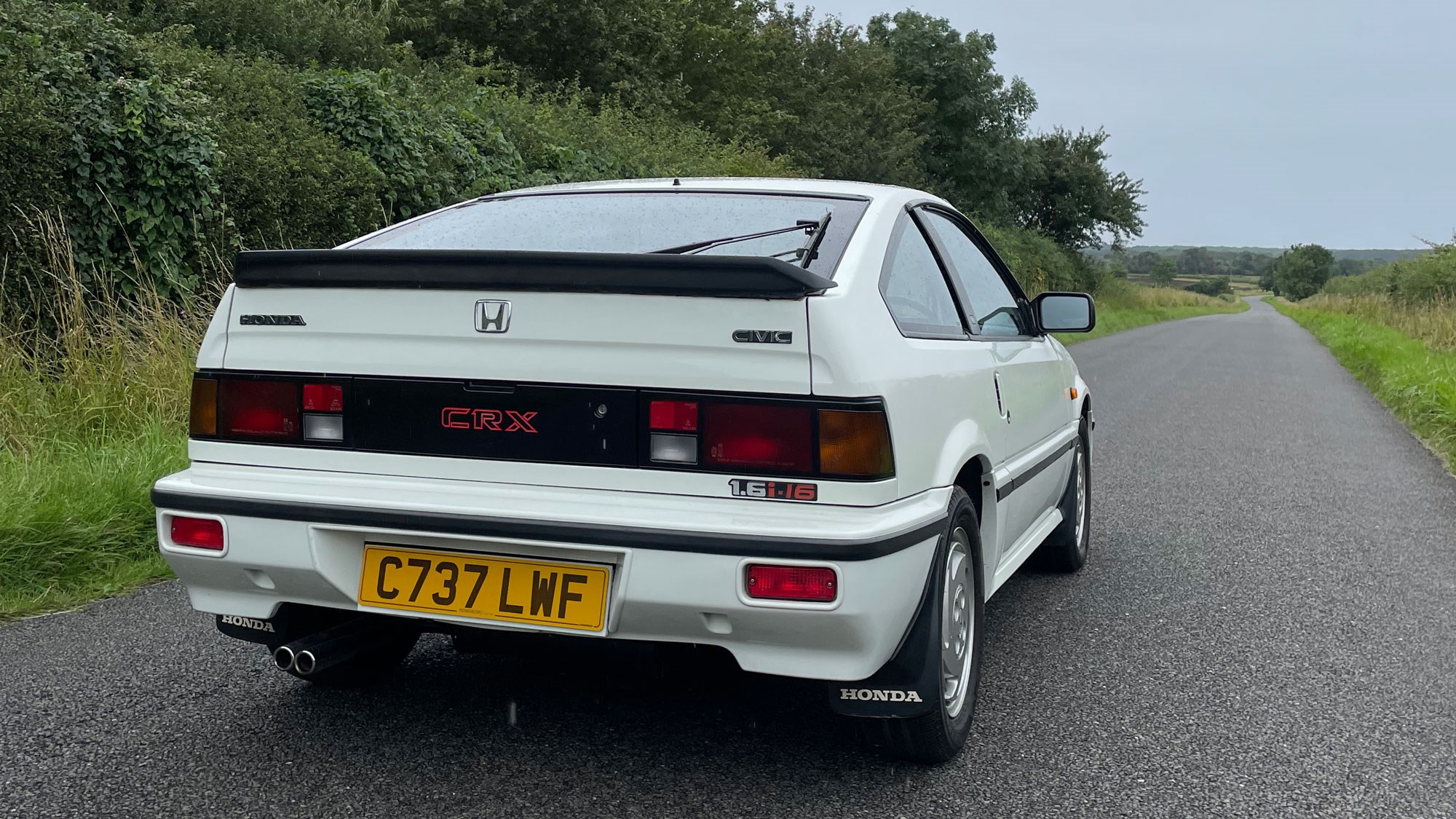
This brings several benefits: the CRX wraps around you when driving and you can nip into gaps in traffic that bigger, bulkier moderns would baulk at. More importantly, the lack of mass brings a pleasingly light kerbweight of just 860kg, with all the commensurate benefits to performance, handling and economy.
Just remember that this small slip of a car isn’t especially roomy inside: the driving position is fine, but the backrest angle adjusts in rather basic notches. The Goldilocks position for my spine wasn’t quite offered.
The interior
Open the tinny door, jump in and soak up the retro atmosphere. The Honda CRX smells straight from 1985: a mix of ageing plastics, zebra-stripe cloth upholstery and gracefully ageing hardware.
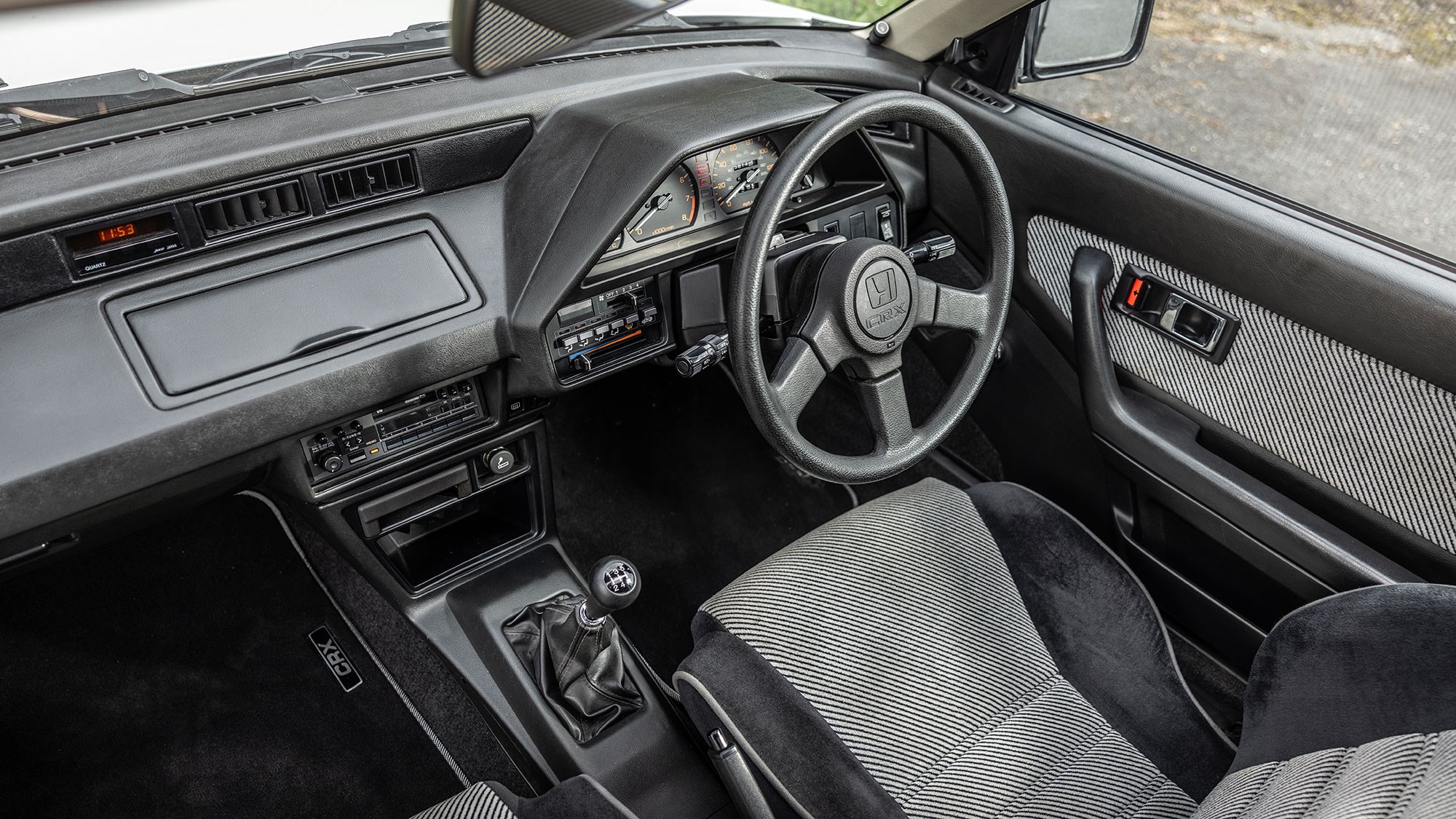
You slide behind a slender, slightly rubbery-feeling steering wheel and immediately notice the Japanese set-up (indicators on the right, wipers on the left).
A prominent tacho is redlined at 7000rpm, hinting at the high-revving histrionics to come. The basic cabin controls are simply laid out, with few surprises. Window winding and mirror adjustment are by mechanical levers.
It’s all plasticky and bereft of any kind of soft-touch surfaces. It’s robust though – and, crucially, everything works as it should. The CRX is a relic from an era before cupholders became the norm for overfed and watered modern passengers. This is a car for driving, not being pampered.
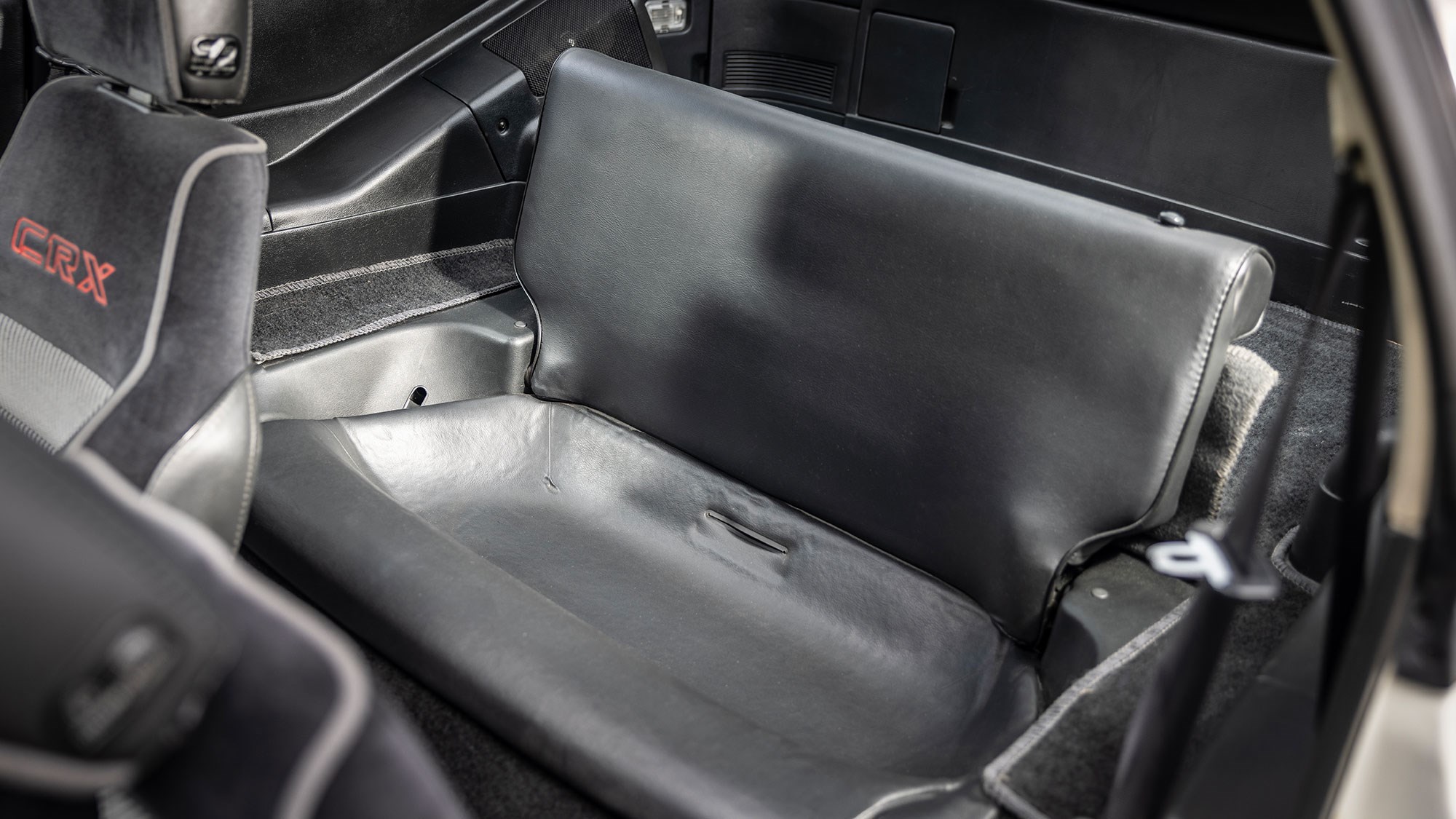
Nor is it a vehicle with very useable rear seats: the back bench is more of a temporary hammock than an actual chair, with no seatbelt provision (above). Different times…
Tech specs
The 1985 Honda CRX followed a basic template: the 1.6-litre four-cylinder codenamed ZC1 is located up front, breathing through a 16-valve head. Note the power bulge to accommodate the raised cylinder head.
Power was competitive for the era, producing 133bhp at a lofty 6800rpm with torque peaking at a weedier 103lb ft at 5500rpm. Drive is sent to the front wheels, via a five-speed manual transmission. For comparison, a VW Golf Mk2 of similar vintage was making 137bhp and 124lb ft, but weighed 960kg.
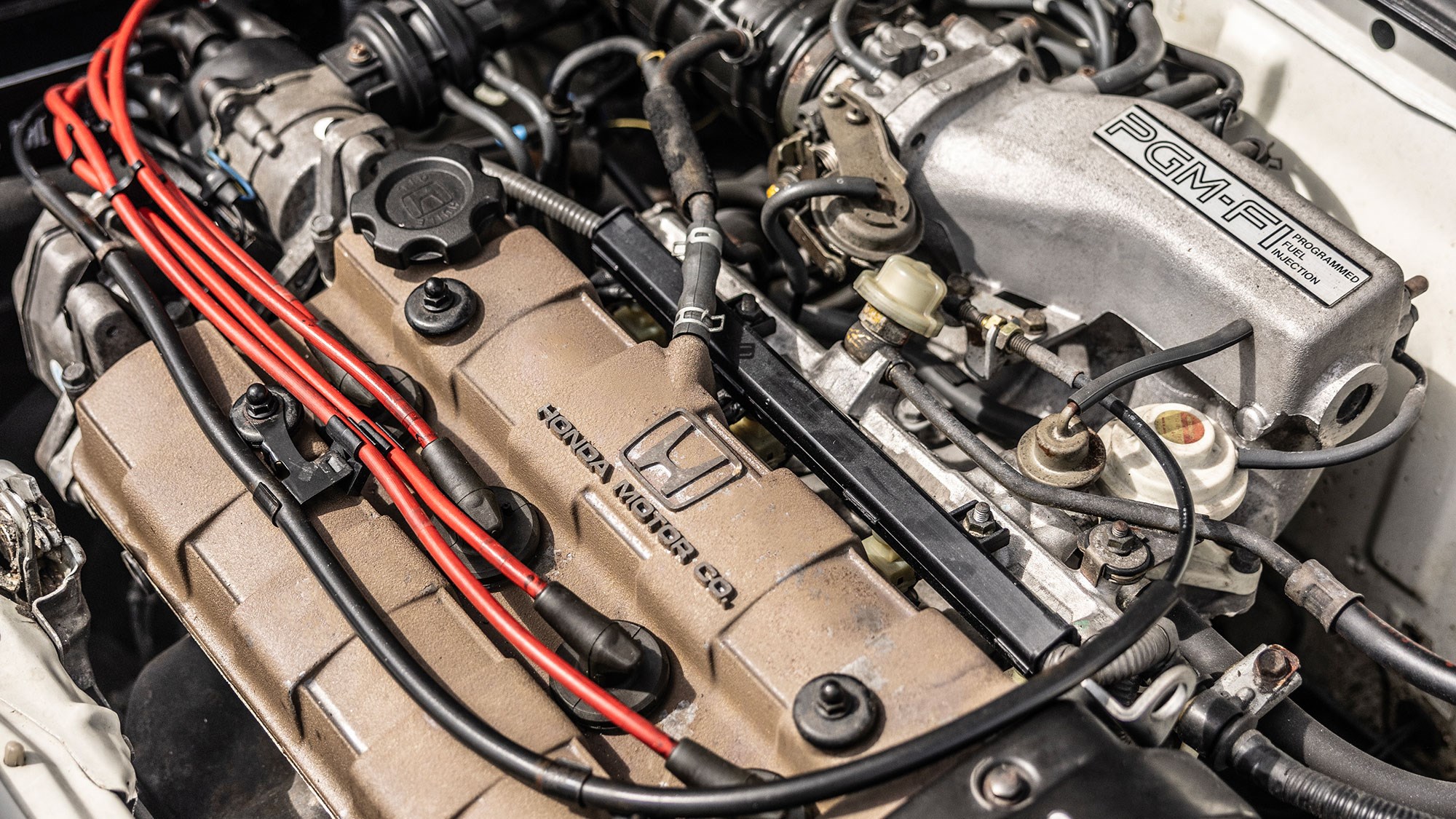
A fuel tank of 41 litres gave a touring range of some 369 miles, according to Honda. Combined fuel consumption stood at 41mpg and CO2 emissions (an alien concept in 1985) are estimated at 165g/km.
Driving impressions
Twist the key and the four-pot wakes up instantly, settling to a burbly tickover. Electronic fuel injection gives the CRX decent manners – reflecting its modern-classic status. Mid-1980s cars are new enough to be relevant today, but still bristling with character from a different era.
The pedals are light enough to make pulling away a doddle. Actually, the CRX demonstrates why Honda has long mastered manual gearchanges: the lever snicks around the gate with oiled precision, making you relish every single cog swap. That the pedals are well positioned for throttle-blips and rev-matching on downchanges is a bonus. You can see why the S2000 and myriad Type R hot hatches had the sweetest gearchanges on record.
That thin steering wheel writhes in your palms, with a rather loose, woolley feel. You feel like BA Baracus from The A Team, the period all-American action drama, constantly sawing at the helm despite no immediate change in direction. This is not steering that hardwires you into the action.
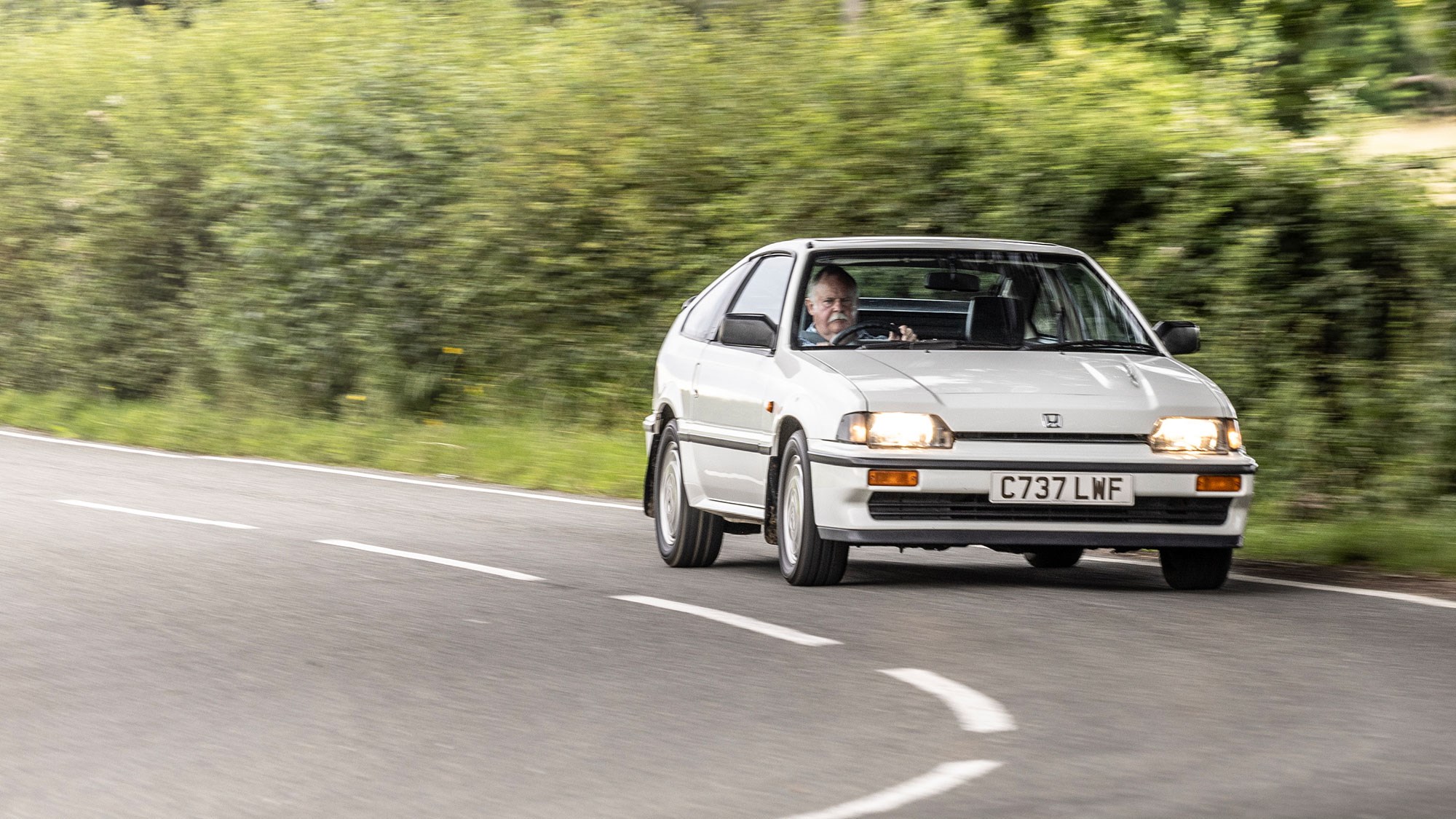
Not that the CRX is all at sea in corners; far from it. That lack of mass pays dividends, the two-door coupe darting into a bend with alacrity and it’s immediately confidence inspiring. You quickly learn to trust the chassis and soon you’re zinging along your favourite back road, four cylinders howling near the redline, progress much faster than you might expect for a car approaching its 40th birthday.
Relish that lack of mass: flyweight cars like the CRX bring a virtuous circle of performance: less mass brings zippier acceleration, that 8.1sec 0-62mph time feeling very much alive and well, and the 14-inch wheels are all that’s needed to grip, stop and steer.
The brakes are surprisingly effective, quashing any lingering doubt about dated stopping technology. With just 860 kilos to quell, it’s just as well. There is no anti-lock system, but you don’t really need it in day-to-day driving. Ditto power steering: only at low parking manoeuvres do you occasionally wish for assistance.
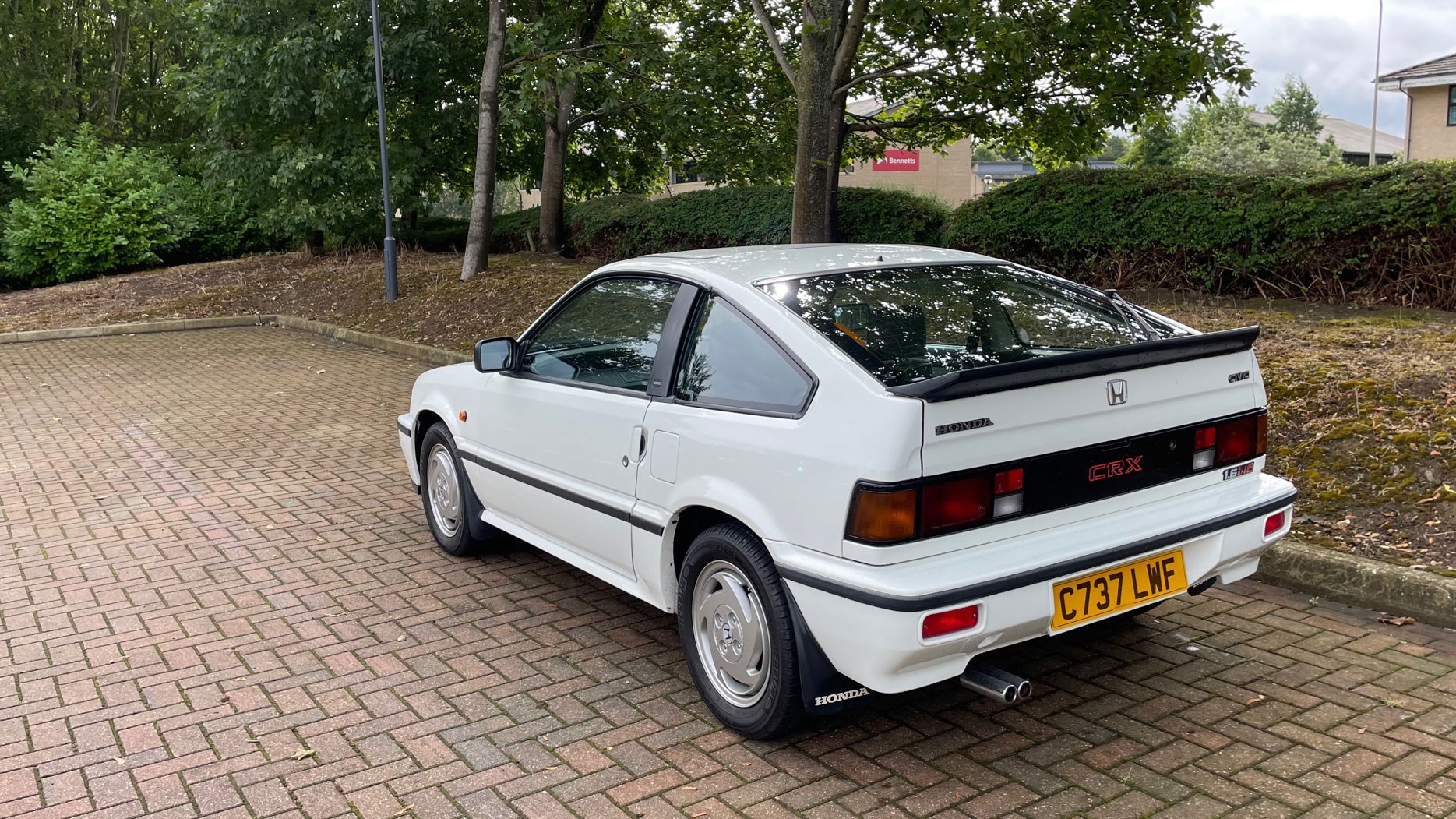
Really, this 1985 Honda CRX is all about the powertrain. That 1.6 is remarkably sonorous, helped by what sounds like a total absence of sound deadening; it’s willing to rev and such is Honda’s engineering rep that you don’t feel guilty for just occasionally zinging up to near the 7k redline, just to relish the noise and forwards thrust.
Honda CRX: verdict
Driving a Honda CRX today is a joy – a blast from the past and a reminder of the joys of an analogue past master. It’s especially useful to chart the progress from CRX to CR-Z in a right-sized package.
This is a brilliant relic from yesteryear and a reminder that small, lightweight sports cars are a rare breed – how we miss affordable, fast fun. Here’s hoping the upcoming electric Honda sports car can recapture some of the spirit of the CRX, reset for the digital age.
More Honda reviews